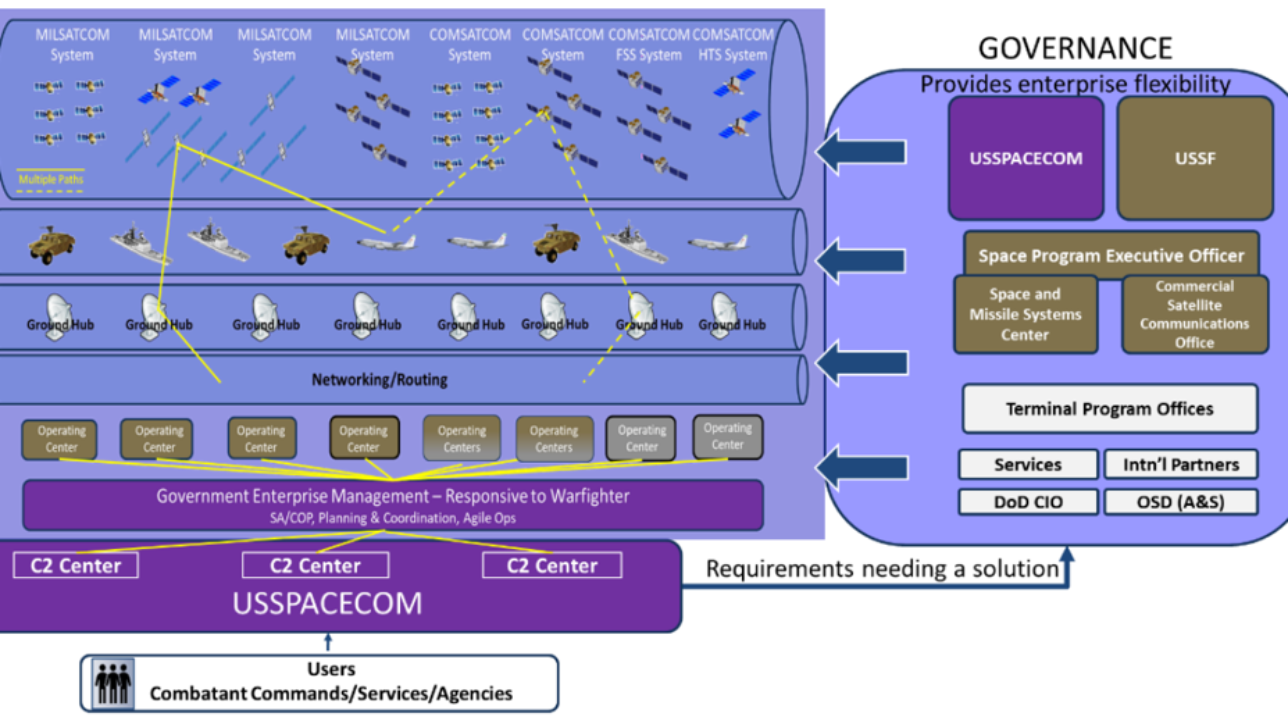February 19, 2020 the United Space Force released a plan to build an “enterprise” architecture of military and private satellites.
The ability to deliver global satellite communications (SATCOM) is unprecedented, and the joint warfighter relies on this capability at all levels and across the range of military operations. SATCOM provides survivable communications for Presidential support and nuclear command and control, and affords national and military leaders a means to maintain strategic situational awareness and convey their intent to the Joint Force Commander (JFC).
In order for the United States to maintain its asymmetric advantage of global space-based communications, the SATCOM enterprise must evolve quickly. We must prepare now to fight SATCOM as a single enterprise through a contested, degraded and operationally-limited (CDO) environment, prevent or withstand loss, and continue to deliver effects to warfighters. United States Space Force (USSF) refers to this operational vision of the future as “Fighting SATCOM.”
The new USSF vision includes emphasis on the speed needed in developing future SATCOM capabilities. The vision states, “We must move faster than our adversaries to ensure warfighters receive the operational benefits of an integrated SATCOM enterprise capable of delivering SATCOM effects in CDO environments. We must adopt faster acquisition processes and faster command and control constructs to maintain the advantage in any conflict.”
Key Attributes:
- Rapid, resilient, sustainable and global access to SATCOM
- Terminal and modem agility
- Network agility
- Cyber, link and operational security
- Data interoperatbility with joint command and control systems
As depicted in the figure the enterprise has multiple segments and aspects that interconnect and must be addressed together.
The Space Force strategy calls for a centralized management of SATCOM acquisitions that currently are done by multiple organizations. SATCOM terminals that will be capable of multi-band and multi-waveform operations, whenever possible to support agile connectivity reducing vulnerability to interference and jamming.
The “United State Space Force Vision for Satellite Communications” can be viewed here. (Link)
Source: www.spaceforce.mil
USSF visions an integrated Satellite Communications enterprise February 25th, 2020Scott Bohnsack

